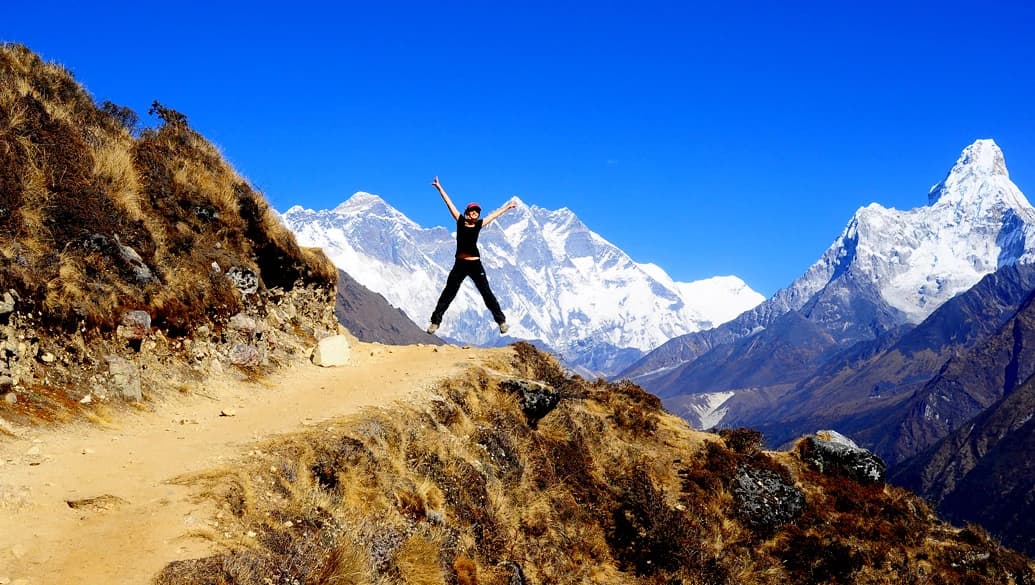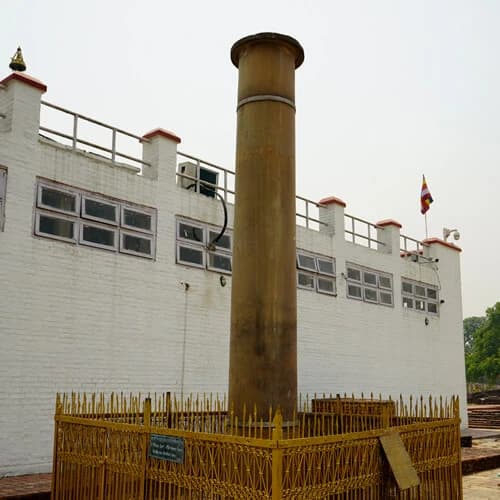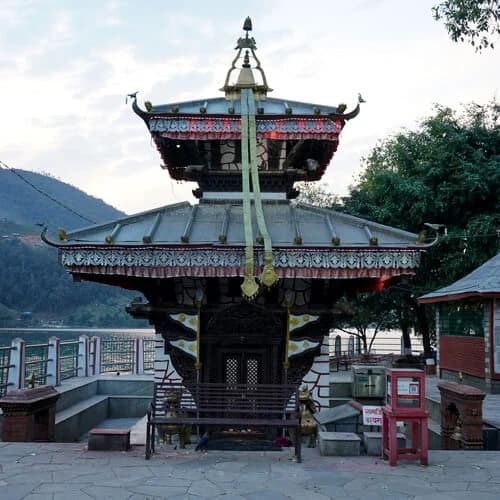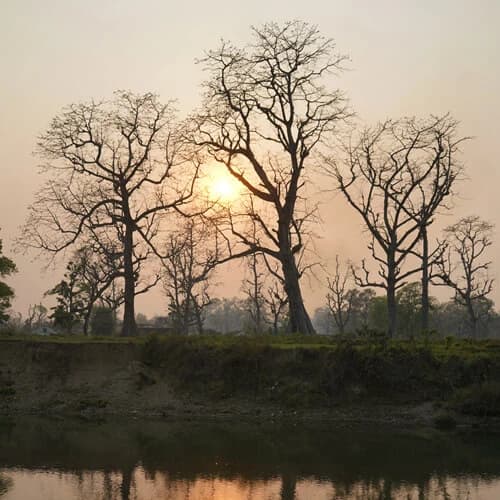Jiri to Everest Base Camp Trek Overview
Jiri is a beautiful town surrounded by verdant hills all around it. The Classic Jiri Everest Base Camp trail takes you along scenic, fertile hills and valleys up to the mountain landscape of the Khumbu region. The unparalleled natural paradise of the surrounding Himalayas in the Everest region is a favorite of trekkers from around the globe. You will be standing at the spectacular location where history was made providing a direct view of the legendary Khumbu Icefall and a thrilling feeling like nowhere else in the world.
This trek sometimes referred to as the "Classic Everest Trek," is ideal for those with plenty of time because it allows hikers to properly adjust to the altitude before reaching the Everest Base Camp and eventually to Kalapatthar, the highest point of the journey. This walk offers a wide range of landscapes, including sub-tropical and alpine forests, Sherpa settlements, yak pastures, glaciers, glacier-fed rivers crossed by breathtaking suspension bridges, and thriving market towns.
The journey is well-liked by those who want to spend more time in the Himalayan region and get a deeper understanding of Sherpa culture and daily life away from the more well-traveled touristy route which they will eventually face later on the journey. Not a trip for the easily agitated, the Jiri EBC Trek is also the only way to avoid the nerve-wracking flight into Lukla! The trek highlights include spending the first week mostly in the Solu Khumbu region, which is home to immaculate terraced farmlands, woods, and the stunning Dudh Koshi River.
Jiri EBC Trek takes you to one of the best viewpoints on earth, the Kala Patthar (5545 m), with an unequaled view of Everest and nearby mountains above, and the Khumbu Glacier and picturesque valley below. You be treated to tremendous mountainous scenery with majestic peaks including Ama Dablam, Lhotse, Nupste, Pumori, Thamserku, Kangde, and many more. This Himalayan landscape is populated by the famous high mountain people named the Sherpa following a customary way of life. The Jiri Everest trekking offers a chance to witness the land of the Sherpa and visit holy Buddhist monasteries.
The 22 days Classical Jiri to Everest Base Camp Trek is available to book with Outfitter Nepal Treks and Expedition. Outfitter Nepal has a great deal of experience leading hikes in the Himalayas of Nepal. Experience the most exhilarating 22 days of your life with our Jiri to EBC Trek program. Come along on one of our departure dates, or get in contact with us to customize an Everest hike to your unique requirements.
Best Features of Jiri to Everest Base Camp Trek
- Sightseeing tours of historical UNESCO World Heritage Sites in Kathmandu
- Scenic drive from kathmandu to Bhandara along verdant hills
- Walk through the Classic Everest Trekking route taken by mountaineering pioneers
- Spend more time in the Himalayas hiking through villages, valleys, and passes
- Experience the peaceful and off-the-beaten trail from Jiri to Phakding
- Get to know about the Sherpa people and culture in Namche and Khumjung Village
- Visit the ancient Tengboche Monastery and attend the prayers
- Reach the base camp of the world’s highest mountain
- Enjoy the unforgettable views of Khumbu Icefall and Khumbu Glacier
- Observe Mt. Everest, Lhotse, Nuptse, Amadablam, Thamserku, and Khumbu Ice Fall from Kala Patthar at an elevation of 5545 meters
- Get on a thrilling yet scenic flight from Lukla to kathmandu on your way back
What to anticipate during the 22-day Jiri to Everest Base Camp Trek?
The Classic Everest Trek starts with an exciting tour of Kathmandu and busy marketplaces. Then, you enjoy a picturesque drive to the starting point of the trek, Bhandara, in a lovely valley at the entry point for the Solu-Khumbu region. The trek heads east through the scenic foothills and valleys and their charming villages.
You cross a few high passes before reaching the Dudh Koshi River valley and follow this dramatically steep valley to Namche Bazaar, the gateway of the Khumbu Region. Namche is located in a natural amphitheater overlooking the valley with the astonishing beauty of the surrounding mountains. You take a day of rest in Namche to get accustomed to the altitude with the chance to explore the surrounding area and villages of Kunde and Khumjung.
The Jiri to Everest Base Camp hike continues further with a stopover for the night at the magnificent Tengboche Monastery, with unforgettable views of several mountain peaks there. The Jiri to EBC trek then moves to the north through one of the original Sherpa settlements in this region, Dingboche, where you spend another acclimatization day. The landscape becomes more remote and desolate as you make your way closer and closer to the highest mountain on earth.
Finally, you are rewarded for your efforts with a great feeling of satisfaction as you reach the Everest Base Camp, the ultimate goal of the Jiri to Everest Base Camp Classical route. Enjoy this extraordinary surroundings and follow it up with a hike to Kala Patthar's viewpoint to see the great views of the Everest and Himalayas.
The Jiri to Everest Base Camp Hike continues with the peaceful journey back to Namche Bazaar, then trek back to Lukla and take a flight to Kathmandu from Lukla to conclude the trek. Once you arrive in Kathmandu, you take a leisurely day to rest your body and fly back to your loving home the next day.
Is the Everest Base Camp Trek via Jiri the right choice for me?
We suggest this trek for everyone who has enough time and is willing to spend that time strolling in the Himalayan landscape of the lower Solu region before entering the high-altitude Khumbu region. It is also a great idea to skip the hazardous flight landing at Lukla Airport. This is a tried and tested path as it used to be the classic route to Everest followed by the mountaineers until the construction of Lukla Airport. The route is also a heaven for solitude lovers who want to experience a peaceful journey, which is impossible in the standard Everest route.
While the EBC Trek via Jiri has many advantages, it is not a journey for the faint-hearted. The walk offers a wealth of experiences, including enticing scenery vistas, the expansive Himalayas, the rich culture and traditions of the locals, adventure, challenges, bright, rushing days, and serene, starry nights. Achieving those rewards is no simple task. It requires two weeks of intense hiking in the untamed high-altitude Himalayan landscape.
The trail demands excellent physical fitness as you have to trek in the tough Himalayan terrain for an extended period of time. In comparison to the standard trail, the Jiri - EBC trail has more ascends and descends that require sound physical and mental health, great fitness, and strong perseverance.
Why choose Outfitter Nepal for this Jiri to EBC trek of 22 days?
While you may find hundreds of websites and organizations online providing their trekking services in the Everest region, not all of them can be trusted. Travelers should conduct independent research before making any travel plans, as there are innumerable accounts of people falling victim to scams. Outfitter Nepal is a reliable local business that has been approved by the government with over 20 years of expertise in the trekking industry. Positive reviews from our guests on TripAdvisor and our website serve as evidence of this.
Here are a few more reasons to choose us for your Jiri to EBC trek:
- We understand what our clients anticipate from us, and we have never disappointed them.
- Our utmost concerns are the security and safety of our customers. Customer satisfaction is the most essential thing to us.
- We make the trip to the EBC fun and enjoyable while still providing all the necessary information about the region.
- We exclusively use knowledgeable and skilled local porters and guides. We evaluate each employee's effectiveness on a regular basis.
- Our expert local trekking guides speak several languages, including English.
- We provide a selection of essential hiking equipment, such as an oximeter, first aid kit, sleeping bag, down jacket, duffel bag, and more.
- As an environmentally conscious tour company, we encourage ethical travel and take part in sustainable tourism.
- We guarantee the best services and the best price package in the market.
- We offer fixed departure dates and we never cancel on you.
- We are open to last-minute reservations.
Major Attractions of the Jiri to Everest Base Camp Trek
Strolling through the lower regions of Everest
The trail begins in Jiri and travels through numerous fascinating communities of Solu or the lower region of Everest for a week before it meets the standard route in Phakding. While trekking, we pass through terraced agricultural fields, sub-tropical jungles with blooming Rhododendron and oak trees, numerous suspension bridges, and high passes. Nature is spectacularly beautiful and what adds a cherry on top is the warm welcome by various ethnic groups along the way.
The trail passes through numerous villages belonging to various ethnic groups. The Sherpas make up the majority of them, along with Tamang, Jerel, Rai, Brahmin, and Chhetri. It is such a wonderful experience witnessing their diverse culture up close.
Hiking in the Sagarmatha National Park
While hiking in the Everest region, visitors can encounter a vast range of climatic zones and vegetation. You travel through Sagarmatha National Park, which is home to many different kinds of plants and animals. UNESCO has inscribed this park as a World Natural Heritage Site. There are numerous stream crossings, dense forest passageways, and ascents and descents along the route. The stunning Lhotse, Cho Oyu, Pumori, Ama Dablam, Thamserku, Kwangde, Kangtaiga, and Gyachyung Kang are all visible from the hike in this national park.
For a long time, birds and other species that were in danger of going extinct have found safety and protection at Sagarmatha National Park. The national park is home to two endangered species: snow leopards and red pandas. Sagarmatha National Park's plethora of birds has long drawn visitors keen on bird-watching. While taking in the landscape, guests can watch a variety of birds typical to the region. You may easily enjoy the seclusion of Sagarmatha National Park with our 22-day EBC trekking tour via Jiri.
The beautiful Himalayan town of Namche Bazaar and its prominent Sherpa culture
Situated at an elevation of 3440 meters above sea level, Namche Bazaar is regarded as the “Gateway of Everest.”. Everything from trekking and climbing gear to Tibetan antiquities can be purchased in this small but bustling town. Along with providing information about the lifestyle and culture of the Sherpas, Namche also acts as a memorial for several mountaineering expeditions. This little village in the Himalayas is famous for its yak cheese and butter.
Namche Bazaar is a significant hub in the Everest region. Namche used to be a major center for trade in the Khumbu region because of its prime location on the side of an arch-shaped mountain and breathtaking views of the main Himalayan peaks all around. You will stay in Namche Bazaar for the whole day to acclimate, which will give you time to explore the city and discover Sherpa culture. You can interact with the amiable locals to add even more special touches to your rest day.
Standing at the base camp of Mt. Everest
The feeling of being at the foot of the highest mountain peak in the world is surreal. At the foot of the Khumbu Glacier, the base camp is surrounded by some of the most famous mountains. The Himalayas and glaciers are breathtakingly beautiful to see. Reaching the base camp of Everest alone is a significant achievement.
Overnight stays are not allowed at the Everest Base Camp; access is only available during the day. From here, the enormous Khumbu Glacier and Khumbu Icefall offer two of the most amazing views. Before departing from this little piece of heaven, make sure to take in the views as much as you can. Your time at base camp is the most inspirational part of the entire trek.
Morning hike to the magnificent viewpoint at 5545 m, Kala Patthar
As you may well know, the whole face of the mountain cannot be seen from Everest's base camp. Still, you shouldn't worry because Kala Patthar, a rocky ridge that provides an excellent spot to view Everest, is only a short climb from Gorakshep. Offering 360-degree views of Everest and the surrounding mountains, Kala Patthar (5545 m) is located above the Everest Base Camp.
The EBC excursion would be incomplete without a visit to Kala Patthar. Reaching the top of this rock offers a wide-angle perspective of both Ama Dablam and Everest, making it one of the most spectacular mountain vistas on Earth. Furthermore, as the sun reaches the summit of Everest at sunrise, the view of its peaks looks spectacular.
Visiting the ancient Tengboche Monastery
Tengboche Monastery is a popular tourist site in the Khumbu region. This historic monastery is a wonderful spot to view the peaks of the mountains and a highly significant religious site. The monastery was rebuilt by Lama Gulu in 1961 after the 1934 earthquake destroyed it. In 1989, the monastery caught fire again. It was later successfully fixed. The Tengboche Monastery remains Khumbu's oldest and greatest monastery despite these terrible incidents. Here you can also learn about the culture and religion of Buddhism.
Scenic mountain flight from Lukla to Kathmandu
At the end of the trek, you take a short 35-minute flight from Lukla that gets you to Kathmandu. As you soar over the Himalayas with glittering mountain peaks below you, you will experience something incredibly thrilling and beautiful. The short runway at Lukla Airport is what adds to the excitement of this journey. At just 525 meters (1,729 feet), it has one of the shortest runways in the world, and at 2,845 meters (9,334 feet), it has one of the highest airports globally. The runway at Lukla Airport is particularly steep and perches on a mountain, making it an unusual place to take off and land.





